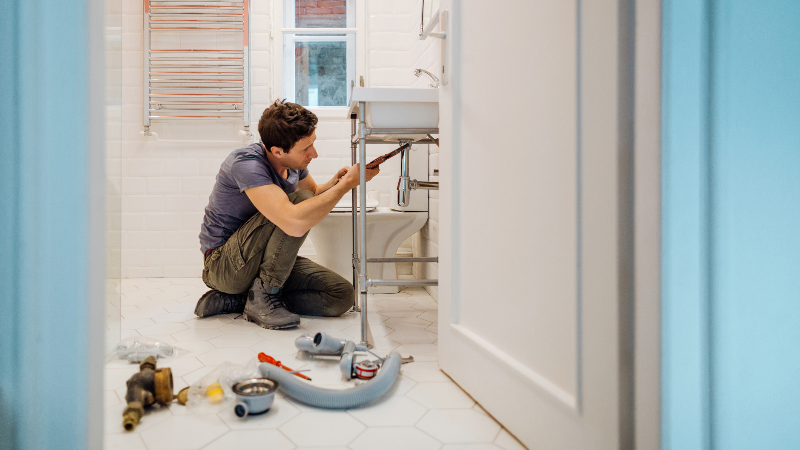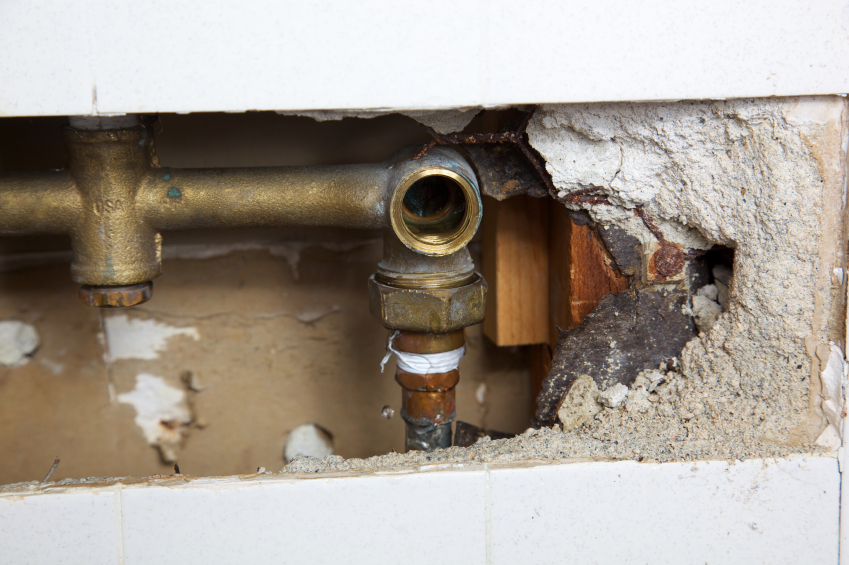Don't Take Chances: Typical Home Appliance Issues That Need a Plumbing Professional
Don't Take Chances: Typical Home Appliance Issues That Need a Plumbing Professional
Blog Article
This article down below on the subject of Diagnose Unwanted Plumbing Noises is indeed motivating. You should read it.

To detect loud plumbing, it is essential to figure out first whether the unwanted noises occur on the system's inlet side-in other words, when water is transformed on-or on the drainpipe side. Sounds on the inlet side have differed reasons: too much water pressure, worn valve as well as tap parts, incorrectly connected pumps or other home appliances, improperly placed pipeline fasteners, as well as plumbing runs including way too many limited bends or various other restrictions. Sounds on the drainpipe side usually originate from bad place or, as with some inlet side noise, a design consisting of tight bends.
Hissing
Hissing noise that happens when a tap is opened a little generally signals excessive water pressure. Consult your local public utility if you suspect this problem; it will be able to tell you the water pressure in your location and also can set up a pressurereducing shutoff on the inbound water supply pipeline if essential.
Various Other Inlet Side Noises
Squeaking, squeaking, scraping, snapping, and also touching typically are caused by the expansion or tightening of pipelines, normally copper ones supplying hot water. The audios happen as the pipes slide versus loose fasteners or strike neighboring home framing. You can typically determine the area of the issue if the pipes are revealed; simply comply with the sound when the pipes are making sounds. Probably you will uncover a loose pipeline hanger or an area where pipelines lie so close to flooring joists or other mounting pieces that they clatter versus them. Connecting foam pipe insulation around the pipelines at the point of get in touch with ought to treat the issue. Be sure bands and also hangers are secure and also give ample support. Where feasible, pipe bolts should be attached to enormous architectural elements such as structure walls as opposed to to framing; doing so lessens the transmission of vibrations from plumbing to surface areas that can enhance and also transfer them. If attaching bolts to framing is inevitable, cover pipes with insulation or various other resilient product where they contact bolts, and sandwich completions of new fasteners in between rubber washers when mounting them.
Fixing plumbing runs that deal with flow-restricting tight or many bends is a last resort that must be undertaken just after consulting a proficient plumbing professional. Regrettably, this scenario is fairly usual in older houses that may not have actually been built with indoor plumbing or that have actually seen several remodels, particularly by beginners.
Chattering or Shrieking
Extreme chattering or shrilling that takes place when a valve or faucet is switched on, which typically disappears when the fitting is opened totally, signals loose or faulty interior parts. The option is to change the valve or faucet with a brand-new one.
Pumps and also appliances such as washing makers and also dishwashers can transfer motor sound to pipelines if they are poorly connected. Link such products to plumbing with plastic or rubber hoses-never inflexible pipe-to isolate them.
Drain Noise
On the drain side of plumbing, the chief goals are to get rid of surface areas that can be struck by dropping or hurrying water and also to shield pipelines to contain unavoidable noises.
In new building, tubs, shower stalls, commodes, and also wallmounted sinks and also containers should be set on or against resilient underlayments to decrease the transmission of noise with them. Water-saving bathrooms as well as taps are much less loud than standard models; install them instead of older types even if codes in your area still permit utilizing older fixtures.
Drainpipes that do not run vertically to the basement or that branch into horizontal pipe runs supported at floor joists or other framing present particularly problematic noise problems. Such pipelines are huge sufficient to emit substantial resonance; they likewise bring considerable amounts of water, which makes the situation worse. In new building and construction, define cast-iron dirt pipes (the big pipes that drain toilets) if you can manage them. Their enormity consists of a lot of the noise made by water going through them. Also, avoid transmitting drains in wall surfaces shown bedrooms and areas where individuals collect. Walls having drains ought to be soundproofed as was described earlier, making use of dual panels of sound-insulating fiberboard and wallboard. Pipelines themselves can be covered with special fiberglass insulation made for the purpose; such pipelines have an invulnerable vinyl skin (occasionally consisting of lead). Results are not always satisfactory.
Thudding
Thudding sound, commonly accompanied by trembling pipes, when a tap or home appliance valve is switched off is a condition called water hammer. The noise and also vibration are caused by the resounding wave of pressure in the water, which suddenly has no area to go. Often opening a shutoff that discharges water quickly right into a section of piping containing a constraint, elbow joint, or tee installation can create the same problem.
Water hammer can typically be healed by setting up fittings called air chambers or shock absorbers in the plumbing to which the trouble valves or taps are linked. These gadgets allow the shock wave produced by the halted flow of water to dissipate airborne they contain, which (unlike water) is compressible.
Older plumbing systems might have short upright sections of capped pipeline behind walls on tap runs for the very same purpose; these can at some point fill with water, lowering or ruining their performance. The remedy is to drain pipes the water system entirely by shutting off the major water supply shutoff and opening all taps. Then open up the main supply shutoff and also close the taps one at a time, beginning with the tap nearest the valve and also ending with the one farthest away.
DIAGNOSE UNWANTED PLUMBING NOISES
Did You Hear That?
One of the first steps to take when diagnosing noisy plumbing is to determine whether the mysterious sound is occurring when your water is turned on or if it is a result of draining water. Noises on the inlet side (or when your water is turned on) could be caused by: excessive water pressure, worn valve or faucet parts, improperly connected pumps or other appliances, incorrectly placed pipe fasteners, and plumbing runs containing too many tight bends or other restrictions. Noises on the drain side usually stem from poor location or a possible pipe layout containing too many tight bends.
Hissing
A hissing noise that occurs when a faucet is opened slightly generally signals excessive water pressure. If you encounter hissing sounds call your locate water company, they will be able to tell you if the water pressure in your area may be the culprit. They can also install a pressure reducing valve on the incoming water supple pipe to help regulate the pressure.
Thudding
Thudding noise, often accompanied by shuddering pipes, when a faucet or appliance valve is turned off is a common condition referred to as a water hammer. The noise and vibration are caused by the reverberating wave of pressure in the water, which suddenly has no place to go. Opening a valve that discharges water at a rapid pace into a section of piping containing a restriction, elbow, or other fitting can also produce water hammer.
Water hammer can usually be cured by installing fittings called air chambers or shock absorbers in the plumbing to which the problem valves or faucets are connected. These devices allow the shock wave created by the halted flow of water to dissipate in the air they contain, which (unlike water) is compressible.
Older plumbing systems may have short vertical sections of capped pipe behind walls on faucet runs for the same purpose; these can eventually fill with water, reducing or destroying their effectiveness. The cure is to drain the water system completely by shutting off the main water supply valve and opening all faucets. Then open the main supply valve and close the faucets one at a time, starting with the faucet nearest the valve and ending with the one farthest away.
Chattering or Screeching
Intense chattering or screeching that occurs when a valve or faucet is turned on, and that usually disappears when the fitting is opened fully, signals loose or defective internal parts. In most cases, the only solution is to replace the defective valve or faucet with a new one.
Pumps and appliances such as washing machines and dishwashers can also transfer motor noise to pipes if they are improperly connected. When installing new appliances always link them to plumbing with plastic or rubber hoses and never use rigid pipe. This will dramatically cut down on the amount of noise create when the appliance is in use.
Other Mysterious Noises
Creaking, squeaking, scratching, snapping, and tapping noises are commonly caused by the expansion or contraction of copper pipes used to supply hot water. The sounds can occur as the pipes slide against loose fasteners or strike nearby house framing.
If you can pinpoint the problem by following the sound to an exposed pipe you may discover a lose pipe hanger or other obstruction that the pipes can clatter against. Attaching foam pipe insulation around the pipes at the contact points will lessen the transmission of vibration from plumbing to surfaces that can amplify the sounds.
When replacing or installing new pipe hangers try to fasten them to larger structural elements that will work to dampen or disperse the sound and always sandwich the ends of new fasteners between rubber washers.
Drain Pipe Noise
When dealing with noises produced by drain pipes the primary goal is to eliminate and surfaces that can be struck by falling water or rushing water and to insulate the pipes to contain any avoidable sounds.
When replacing toilets or faucets, inquire about water-saving alternatives as they are less noisy than conventional models. Upgrading your fixtures can be an easy solution to stubborn plumbing sounds.
When having old plumbing repaired or replaced avoid routing drain pipes in walls shared with bedrooms or rooms where your family and guests often gather. Walls containing drain pipes need to be soundproofed and the pipes themselves should be wrapped with specially designed fiberglass insulation.
https://www.horizonservices.com/about-us/blog/diagnose-unwanted-plumbing-noises/

Hopefully you liked our excerpt about Why Do My Plumbing Pipes Make A Knocking Noise. Thank you for taking the time to browse our content. Do you know somebody else who is excited by the niche? Why not promote it. Thanks a bunch for your time. Visit again soon.
Call Today Report this page